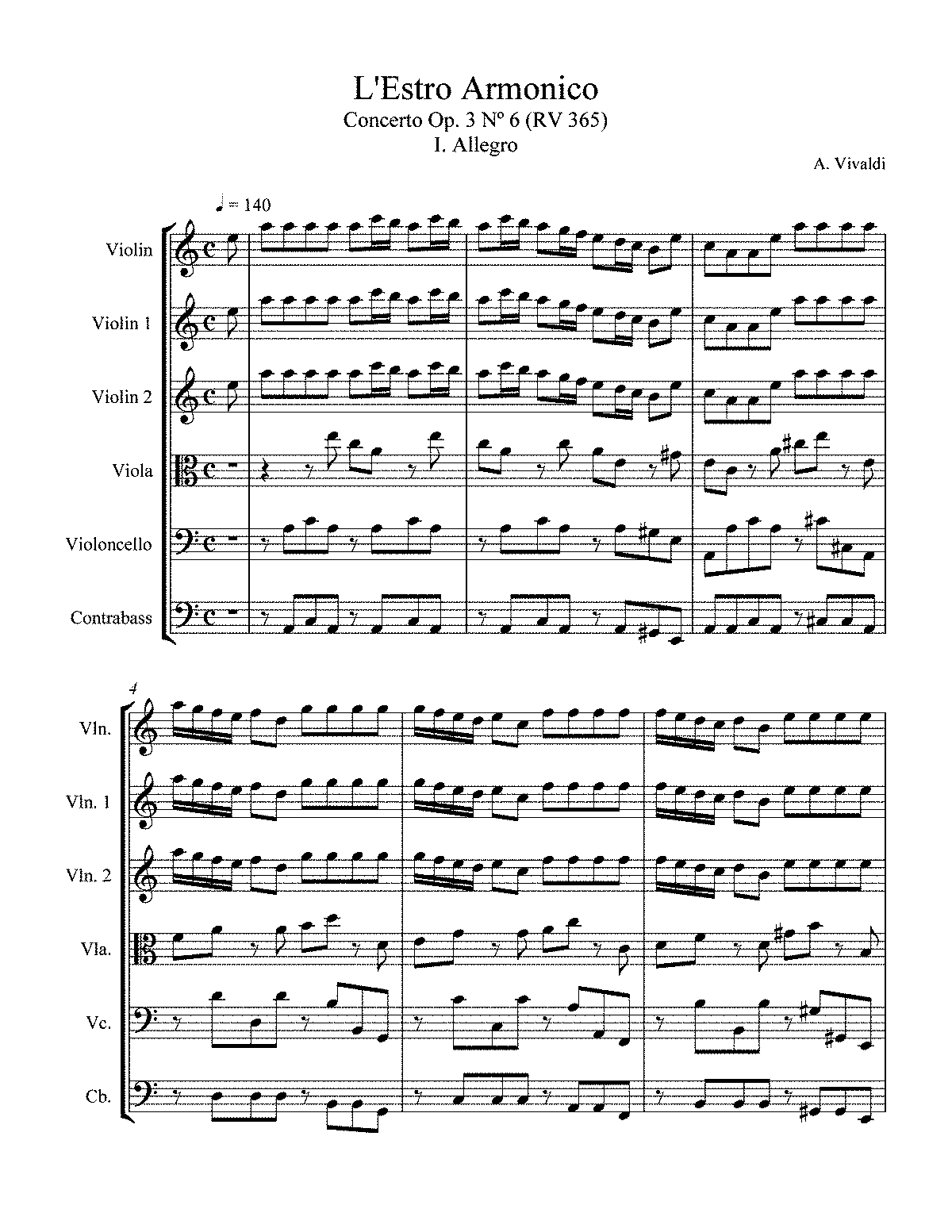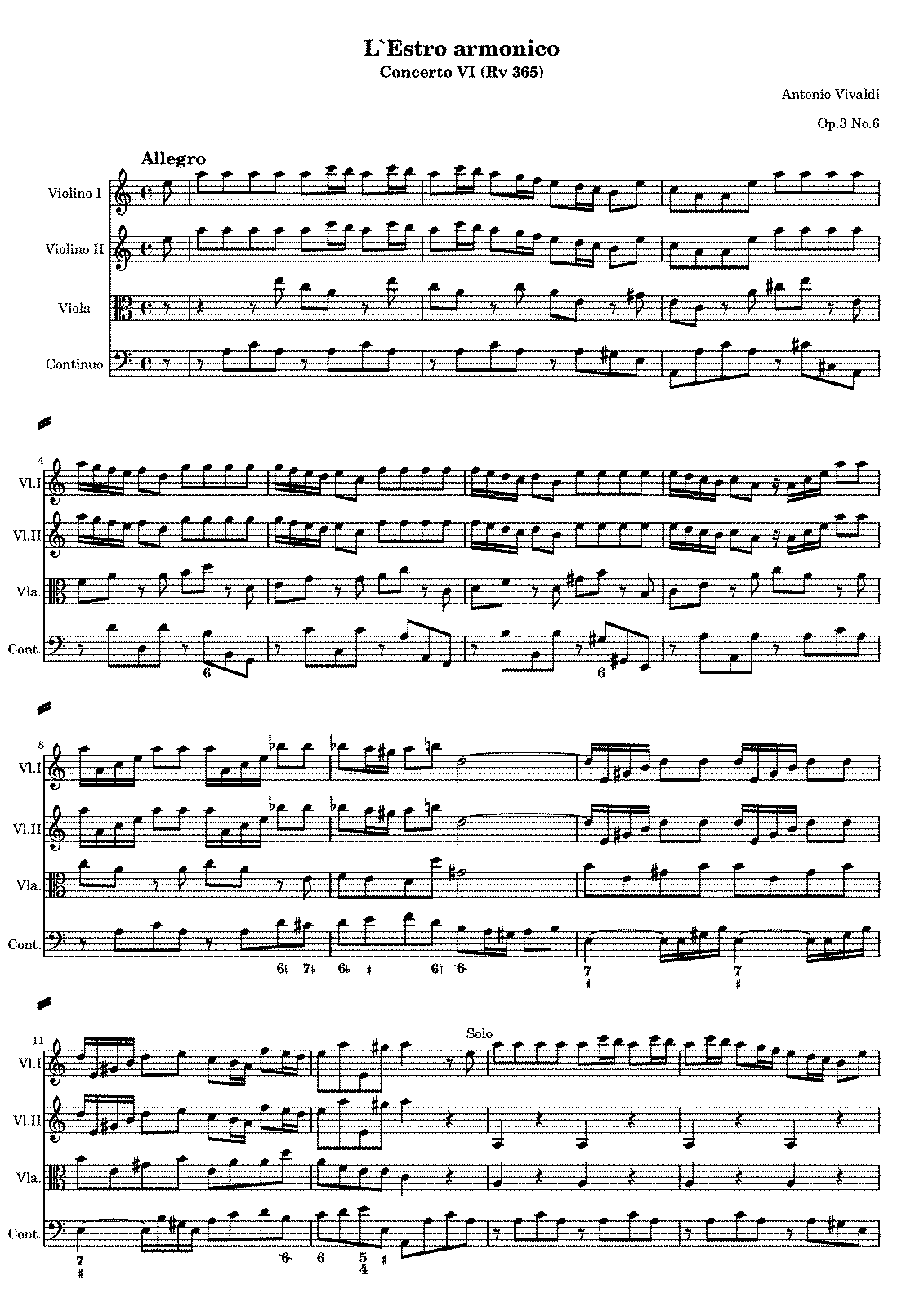

Now that might sound too simple to be true, but most of the time when people can't play it fast, they can't play it slow, or they haven't practiced playing it slow. It's like creating a new habit of correct, calm playing, with a spacious feeling of time.Īnd once you can do it slow, you can do it fast.
#Concerto in a minor vivaldi series#
What did this do? This locked in a series of accurate performances, with time for the brain to plan the next move, execute passages correctly and perform the dynamics we'd planned. This student stuck to the plan and practiced every day at that lower speed. It was also much easier to pay attention to executing the dynamics and musical ideas. At that speed, the hard passages were simply not as hard. "You need to practice for an entire week at a speed where you can play the entire piece without any mistakes at all." We agreed to set the metronome on 80. "You are still making mistakes and tripping over things at this speed, if we're honest," I said. Yes, the metronome!įirst we clocked her - how fast was she regularly playing this piece when she practiced? It was around quarter=88.

This is where the metronome came to the rescue. There were efforts at musical expression, but it was spotty. Then one must execute them - not just barrel through.įor my student, she had learned the passages reasonably well, but there were still moments of bumbling, and overall the piece felt pretty frantic. The first step is to become conscious of all these musical markings and conventions. Musically, it's important to attend to a number of details: warming up repeated notes with some vibrato, dynamics, episodes that should get louder and peak at a certain note, repeated phrases that echo the second time, etc. After taking a passage through many rhythmic permutations, it will start to flow surprisingly well. This will test the brain and take persistence to truly achieve each rhythm. Once you can slowly play the entire passage without any mistakes, play the passage in rhythms, including dotted rhythms and groupings of fast-slow. Sounds simple enough, but this takes tremendous patience and honesty - no glossing over anything. Play the difficult passages slowly, until all the notes are learned. The first hurdle is obvious: the passagework. It's better to take the "win" of playing the original and playing it well.īut for the student who hits the wall and then wants to climb it, I do have some ideas. If that "new level" is not happening at this juncture for a student, then it can happen later. That said, I do see the musical argument for using Vivaldi's original - and it's a good alternative for students who are not ready for the big push of Nachez. Of course, this doesn't happen if the student bumbles through and leaves the piece after simply "getting the notes." And frankly, the challenge of the Nachez version is all part of it - it's a lot harder than Vivaldi's original, which has easier passagework. So when mastered well and played up to tempo, Vivaldi's Concerto in A minor can be a "gateway piece" that pushes a student's technique to a new level. Aunt Rhody's goose clearly has left the barnyard! It's pretty exciting - a student can find recordings of Itzhak Perlman playing this piece, or the wild-fast Baroque masters of Tafelmusik. It's one of those early "real pieces" - something that the pros play. Generally, the student is going from being a beginner to being more of a solidly intermediate student.
#Concerto in a minor vivaldi free#
In his free time, Timothy Judd enjoys working out with Richmond’s popular SEAL Team Physical Training program.A little bit about this piece: when studied as part of a progression, whether as part of the Suzuki method or a traditional method, the piece occurs at an interesting juncture for students. Judd has maintained a private violin studio in the Richmond area since 2002 and has been active coaching chamber music and numerous youth orchestra sectionals. He was a student of Anastasia Jempelis, one of the earliest champions of the Suzuki method in the United States.Ī passionate teacher, Mr. The son of public school music educators, Timothy Judd began violin lessons at the age of four through Eastman’s Community Education Division. He is a graduate of the Eastman School of Music where he earned the degrees Bachelor of Music and Master of Music, studying with world renowned Ukrainian-American violinist Oleh Krysa. About Timothy JuddĪ native of Upstate New York, Timothy Judd has been a member of the Richmond Symphony violin section since 2001. Do you prefer one of these recordings over another? It’s amazing that we can approach the same piece in so many different ways.


 0 kommentar(er)
0 kommentar(er)
